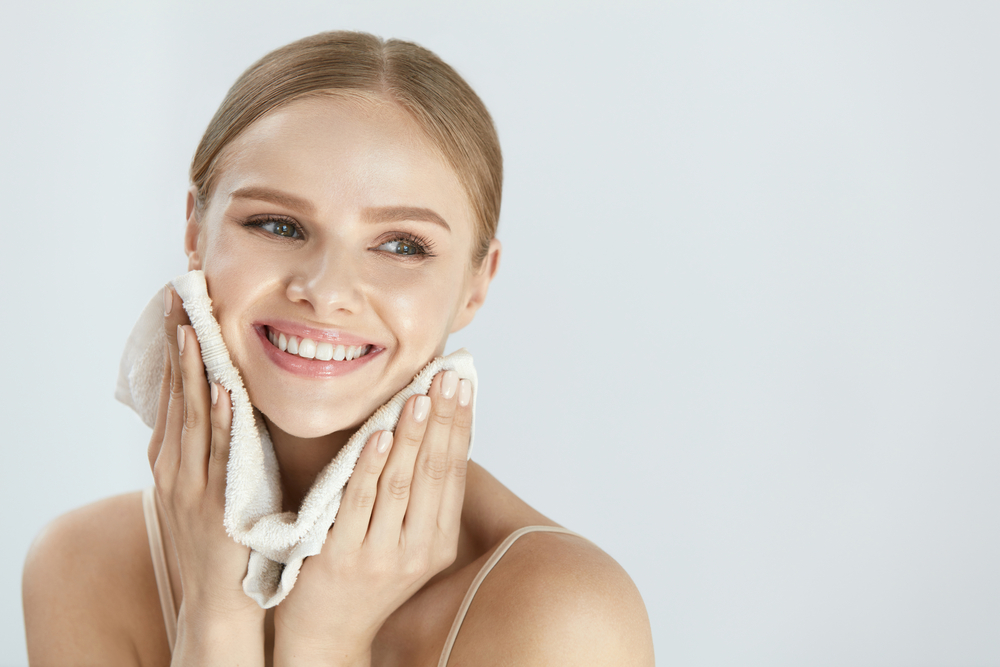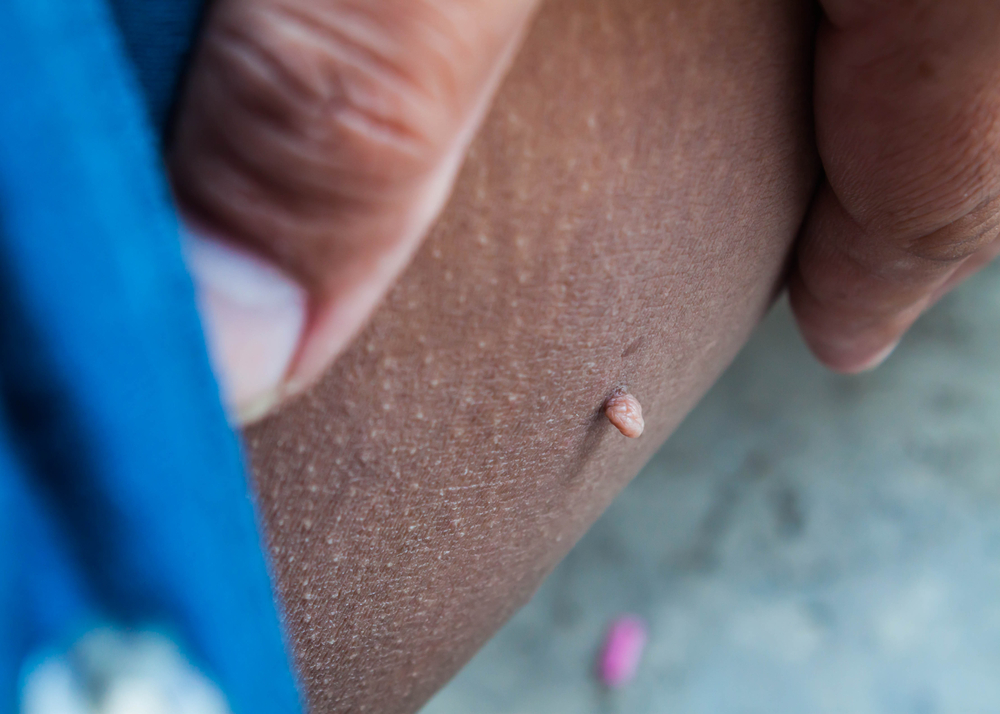- Oil cleansing is the latest skincare trend, promising glowing, healthy-looking skin.
- The method is simple: all it takes is an oil-based cleanser, a hot cloth and warm water.
- Many people expect oil cleansing to worsen oily skin, but it may actually have the opposite effect.
- Dermatologists warn that this approach may not be appropriate for all skin types and skin concerns.
For many years, the phrase “oil-free” went a long way when it came to describing gentle facial skincare products. But lately there’s been a lot of hype surrounding the oil-based cleansing method, which claims to leave users with clear, youthful, and radiant skin without stripping it of moisture or causing irritation.
The oil cleansing method — or the OCM, as it’s called on the Internet — has garnered a whole lot of hype in the past few months. Reddit’s Skincare Addition Subreddit helped catapult the trend to viral status with its Guide to Oil Cleansing, touting that oil cleansing can “get rid of all the dirt and product you want off of your face, without over cleansing and stripping your skin.”
Oil cleansing is super appealing to those who prefer all-natural, DIY skincare products. That’s because most ingredients in oil-based cleansers are derived from plants, with many formulas using natural antiseptics and humectants as well.
This sounds like really good news for those who want to maintain a healthy complexion, without using damaging chemicals or harsh exfoliants.
There’s some nuance to this method, however, and reason to believe that it may not the best choice for all skin issues.
“Facial cleansing oils can help to gently dissolve oil based makeups and other grease and dirt on the skin, making it easier to remove them,” says Dr. Tsippora Shainhouse of Rapaport Dermatology in Beverly Hills, CA.
But Dr. Shainhouse warns that oil cleansing alone often isn’t suitable for some skin types. “I will often recommend following this step with a regular face wash in order to remove excess oils in acne-prone or sensitive skin,” she adds.
Here’s our rundown of the method, with advice — and some words of caution — from top skin experts.
What is Oil Cleansing?
The oil cleansing method is exactly what it sounds like: the process of using a cleansing oil to dissolve and slough away dirt and impurities from the skin.
Oil cleansing is generally combined with the steam-cleansing method (also called the “hot cloth cleansing” method), which requires you to place a warm washcloth over the skin for several seconds to open up the pores and provide a deeper clean.
Our skin already produces plenty of natural oils, which can harden alongside dirt, debris and free radicals, causing whiteheads, blackheads and rashes. While adding excess oil to the skin has long-been a no-no, dermatologists now say that oil can actually dissolve oil, helping you to control surplus oil production.
The Benefits of Oil Cleansing
So should you try it? Sebastopol, CA dermatologist Dr. Cynthia Bailey doesn’t recommend oil cleansing for all patients, but doesn’t discourage it either. Instead, she tries to understand a patient’s particular skincare goals. “For some, oil cleansing is fine, for others, it’s not enough.” Dr. Bailey says. If a patient needs extra-cleansing power, for example, she steers them away from oil cleansing.
According to Beauty Editor founder and editor Michelle Villett, oil cleansing holds a myriad of benefits. She says this alternative cleansing approach provides a deeper clean, and even claims that it can yield better results than double-cleansing. What’s more, oil cleansing can be significantly gentler than traditional cleansers, as products are often made with all-natural oils and additives that help soothe problematic skin.
If gentle is your goal, you’ll want to make sure you’re choosing products that contain non-comedogenic, non-irritating ingredients. They should also be free of irritating additives like sulfates and mineral oil.
And if you have deeply clogged pores, steaming the skin beforehand can help the cleansing oils penetrate more deeply into the skin. Hot cloth cleansing also softens the skin and boosts circulation, ensuring that it gets the oxygen it needs to thrive. This two-pronged approach leaves the skin looking fresher and more radiant.
Hot cloth cleansing doesn’t actually open the pores, though — that’s a skin care myth. Pores don’t possess the ability to dilate and contract. However, heat does help loosen debris like dry skin and dirt more easily.
But is oil cleansing right for everyone? Bailey emphasizes the importance of using specific cleansers for specific applications. For example, a foaming cleanser can help remove the agents that lead to clogged pores.
“Oil on the skin surface will interfere with the absorption of water-soluble products and actives,” explains Bailey. “I prefer a foaming skin cleanser made with a surfactant that can pick up oil, products, dirt, dead cells and bacteria on the surface of the skin. Insoluble materials then bind to water, making them easier to rinse off.”
Is Oil Cleansing Safe for All Skin Types?
It may seem counter-intuitive, but those who have oily or sensitive skin can still reap serious benefits from the oil cleansing method. The key is to choose products that are fortified with extra ingredients — such as vitamin E — which help correct your specific skin issues.
Using the right type of oil or oil blend in your skincare regimen is also essential to getting good results. Certain essential oils — jojoba oil, almond oil, grapeseed oil, sunflower seed oil, safflower oil and others — are fortified with calming vitamins and antioxidants, which help fight blemishes. You can also create a DIY oil cleanser using castor oil, olive oil, or hazelnut oil. These are all astringent oils which help extract impurities.
Choose your oil depending on your skin type:
- Jojoba oil is considered the best oil cleanser base for all skin types, but is especially effective on acne-prone skin.
- Sweet almond oil and grapeseed oil are appropriate for all skin types as well, but are particularly appropriate for those with oily skin.
- People with aging or dry skin will want to choose cleansers containing olive oil, argan oil or tamanu oil.
- Be sure to avoid any blend that contains coconut oil, as this is a comedogenic ingredient, meaning it will clog your pores and lead to blemishes.
Regardless of your specific goals, make sure you don’t use any oils derived from known allergens. Too often people will try a hazelnut oil or certain antioxidant oil that ends up causing serious allergic reactions, leading to semi-permanent or permanent damage.
When trying any new oil types on your skin, it’s a good idea to test the oil on an area other than your face, like your forearm. You can apply the oil for a few hours or more before using it on your face and watch for a red, bumpy, and possibly itchy rash. This will help avoid catastrophic results before applying it to your face.
It’s worth noting that OCM is sparsely sourced and studied at the present time, and that the American Academy of Dermatology (AAD) still recommends the use of oil-free cleansers, moisturizers and makeup remover when treating acne. Their recommendations are based statistics and data gathered from physicians.
Additionally, some people with cystic acne, rosacea and other serious skin conditions have reported poor results with the OCM, which is why it’s important to consult your dermatologist before integrating this method into your routine.
A How-To Guide to Oil Cleansing
To start your oil cleansing journey, you’ll need your preferred oil cleanser, a washcloth and some warm water. You may also want to follow up oil cleansing with a foaming face wash for a deeper clean.
- Apply a small amount of cleansing oil to the skin for a few seconds, gently massaging problem areas like the T-zone, nose and forehead. Allow the oil to seep into the skin to clear away dirt, debris and dead skin cells for about 30 seconds.
- Run a clean, dry washcloth under warm water and place it over your face for 10 seconds to create a steaming sensation that will help open up your pores. Important: never reuse a washcloth, as it can harbor bacteria and worsen acne. Also, make sure to avoid hot water during this process as it can dry out the skin.
- Use the cloth to gently wipe away the cleanser and lightly massage the skin to slough away any makeup, dirt or skin cells that might have moved to the surface.
- Repeat three or four more times, beginning with step 1.
- If you have particularly oily, dry or combination skin, you may want to consider following up oil cleansing with a gentle foaming cleanser.
If you prefer the non-DIY method to cleansing, you can find an assortment of oil cleanser recommendations for products like Sephora, Reddit and Ulta on your favorite beauty sites. Other popular oil cleansers include Sunday Riley’s UFO Ultra-Clarifying Face Oil, and DHC Deep Cleansing Oil.
In either case, make sure to talk with a board-certified dermatologist about your concerns before starting any new skin care regimen.









